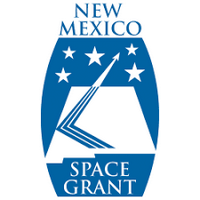New Mexico Space Grant Consortium
WERC Design Competition

The College of Engineering at New Mexico State University (NMSU) has unique outreach programs, such as WERC Environmental Design Contest. The purpose of the competition is to bring industry, government, and academia together to search for improved solutions to environmental challenge [1]. The 2018 Environmental Design Competition will be held at New Mexico State University in Las Cruces, New Mexico. The contest is open to any college student throughout the United Statesand around the world. Students must design solutions for real-world problems and develop operational bench-scale models of their technologies. The design contest has five sections each with different tasks. The sections are: Industry need, Emerging Innovation for Sustainable Land Use Planning, Internet of Things (IOT) for Environmental Applications, Environmental Public Health and an Open task [1]. The section that we are registering for is Industry Need, Task 1: Water Reclamation System for International Space Station. The task sponsor is The National Aeronautics and Space Administration (NASA).
Environmental monitoring of the International Space Station (ISS) is crucial to ensure astronautsâ health. According to the background description, the life support systems on the ISS is in charge of three main processes which are environmental monitoring, atmosphere management, and water management [2]. Spacecraft are partially or fully-closed environments, hence the crewmembers rely on recycled water as their primary potable water source [3]. The U.S. water processor assembly (WPA) produces potable water recovered from a combined wastewater feed consisting of humidity condensate and urine distillate [4]. Much of the
recycled water comes from spacecraft air condensate; therefore, contaminants in the air can also have a dramatic effect on potable water reclamation/purification and resulting water quality [3]. Hence, the quality of air and water must be constantly monitored and maintained. This means that there should be limited amounts of inorganic and organic chemical contaminants, as well as limits on microbial growth. The ISS overall quality of the water is tested with a Total Organic Carbon analyzer (TOCA) which provides excellent trending data regarding total organics [5]. In recent years, routine level increases have been observed in Total Organic Carbon (TOC) [3]. NASA initially planned on keeping the TOC levels below 3 mg/L. However, the readings were shown to be encroaching on that upper limit [5]. At the same time, NASA has also detected a buildup of various organic
compounds within the ISS system. These organic compounds consist of dimethylsilanediol, ethanol, Isopropanol, trimethylsilanol, 2-butanone, methanol, and acetone [6]. The most concerning of this group based on quantity are dimethylsilanediol, ethanol, and methanol [2]. NASA has designed a solution to filter the dimethylsilanediol from the environment of the ISS by replacing the Multifiltration Beds within the filter, although not much progress has been gained on methanol and ethanol [6]. This research is of paramount importance because potable water is essential for personal hydration of astronauts. This project will provide safe drinking water in order to protect the health of the ISS crew. Therefore, the mission of our team consists of developing a method that removes traces levels of methanol and ethanol from the recycle water supply to drop the TOC levels below
3 mg/L. There are some constrains for the system according to the contest: (1) it should not be dependable on gravity, (2) function with little energy or mass, (3) recover high water ratios, and (4) preferably the solution should be fully regenerative. The tasks deliverables are a written report, safety summary and flow sheet, oral presentation, bench-scale demonstration, and a poster presentation. The bench-scale demonstration will
consist of the full package representing technical, analytical, and financial performances results
of th

